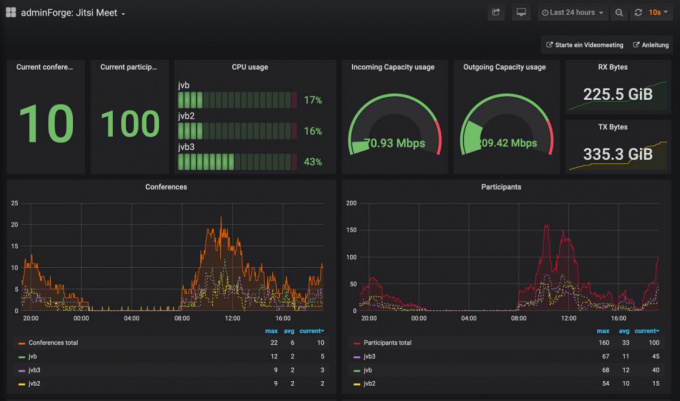"Take Zoom. It can handle hundreds of participants. My company also uses it worldwide. And yesterday we had a meeting with 1,500 colleagues." Let me guess: for most of us, a video conference looks a little different. But where are the differences?
No, this will not be a text about "why we don't use Zoom".
This already exists in other places. For example, here and here. We also discovered this one and found it quite good.
Today, we want to talk about the tool of choice for the right purpose.
1:1 meetings (or conferences with up to 10 participants)
Two people used to talk on the phone. Today they like to chat. Whether Rocket.Chat or Threema or Signal. Telegram, too, for all I care. If they want to see each other, tools should be chosen that create as few hurdles as possible and only focus on the relevant functions. From our experience, one that is particularly well-suited for this:
- Jitsi Meet
- Kopano Meet
- Nextcloud Talk
All immediately provide a shared "space" for seeing, speaking, listening and, if needed, screensharing. Jitsi Meet can be easily integrated into Rocket.Chat and you can escalate directly from a chat to the "video call" :). Sometimes talking is faster than writing. And looking into each other's eyes helps to assure that both mean the same thing.
Nevertheless, it requires discipline on the part of all participants. Turning off microphones as a self-imposed "default setting" should be a matter of course when you have nothing to say. And the fact that everyone can "take away" a screen-sharing session from the other is intentional, because it is trusted that one does not do this if there is no reason for it.
The tools mentioned above can of course also handle larger rounds. Rough guideline: 5 - 15 (jitsi also considerably more.)
Adminforge runs a public instance in Germany that gives quite exciting insights into the current workload. The German-speaking Drupal community has just held its first virtual Meetup and at peak times 50 simultaneous participants were no problem.



